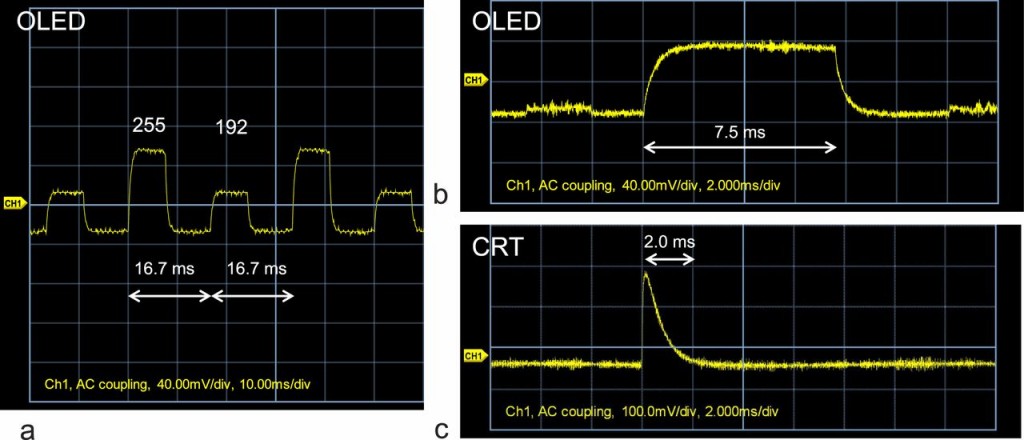Page 3 of 3
Re: Here's a real example of a 1000hz display... I think
Posted: 01 Feb 2015, 16:17
by Edmond
fury wrote:It'd be pretty neat to have 1000hz with 1ms response time.
OLED has a response times of 0.02ms for
ALL colors, not just grey2grey. Thats basically the return of CRT for you.
I hear that motion on 60hz OLED looks way better than on 60hz LCD because of that alone.
Also OLED is capable to go like 2000hz high or something, it makes no difference to it.
+you add something like F/A/Gsync and you get a 100% artifact free display
Displayport 1.3 has the bandwidth to do 500hz on 1080p f/a/gsync. I wonder if the chief blurbuster would be able to tell the motion blur difference between a 500hz oled and lightboost.
Re: Here's a real example of a 1000hz display... I think
Posted: 01 Feb 2015, 16:47
by flood
blah so much misunderstanding around here
Re: Here's a real example of a 1000hz display... I think
Posted: 08 Feb 2015, 21:08
by Chief Blur Buster
Edmond, I have some corrections for your information about OLEDs:
Edmond wrote:fury wrote:It'd be pretty neat to have 1000hz with 1ms response time.
OLED has a response times of 0.02ms for
ALL colors, not just grey2grey.
Depends on OLED. Active matrix OLED is slower.

Edmond wrote:Thats basically the return of CRT for you.
I hear that motion on 60hz OLED looks way better than on 60hz LCD because of that alone.
Not necessarily. There are LCDs that have less motion blur than OLED. See
Why Do Some OLEDs Have Motion Blur?. Some OLEDs, such as the one used by Oculus DK2 and newer, do a really good job at eliminating motion blur by using a persistence-lowering rolling OLED scan.
Edmond wrote:Also OLED is capable to go like 2000hz high or something, it makes no difference to it.
Some corrections:
- Response time has no relationship to refresh rate. You can have a 33ms 60Hz display (response slower than a refresh), or a 1ms 120Hz display (response faster than a refresh).
- Refresh rate is not necessarily proportional to motion blur. Persistence is more important than refresh rate, for motion response.
It's important to know
not all OLEDs are blur-free and artifact-free. And the
best LCDs have better, sharper, clearer and more CRT-like motion, than the worst OLEDs (in terms of OLEDs that don't bother lowering persistence).
That said, a well-optimized OLED will be very aritifact free, I agree. The best OLEDs can blow away the best LCDs, but not every single OLEDs manage to be better than LCDs.
